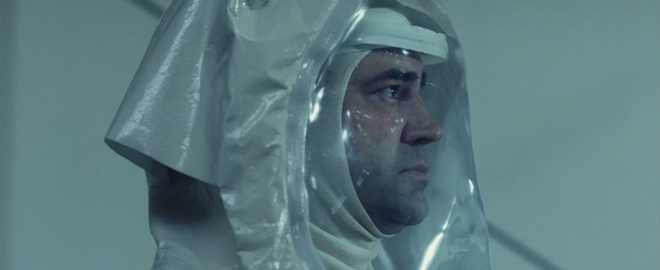A good title can sometimes be enough to pull a person in. For example, Hiroshi Sakuraba’s light novel All You Need Is Kill intrigued readers around the world with its grammar-mangling Beatles reference, which was enough to keep them reading its wartime Groundhog Day-esque premise. It did not last into its 2014 Hollywood adaptation though, where it was renamed Edge of Tomorrow to a less-enthusiastic response. Its DVD/Blu-ray release ended up minimising its name in favour of its snappier tagline “Live. Die. Repeat,” itself originally an alternate proposed title.

Fortunately, Epic Pictures’ The Man Who Killed Hitler and Then The Bigfoot promises to be different. It aims to express themes like the despondence within old age, while flashing some wit along the way. It will be making its world premiere on Friday, July 20, 2018, at Montreal’s Fantasia International Film Festival.
Written, Directed and Produced by Robert D. Krzykowski (Elsie Hooper short 2016), the film tells a story about Calvin Barr (Sam Elliot: Road House 1989, The Big Lebowski 1998), a World War II veteran who actually killed Adolf Hitler- a secret he is unable to tell the world at large. Just as he is about to come to terms with this fact, and his life overall, he is contacted by the FBI and the Royal Canadian Mounted Police. They have a mission for him, and only he can pull it off; he must kill Bigfoot.
Sam Elliot has had an esteemed career. Plus, his role’s younger counterpart is played by Aidan Turner, star of The Hobbit trilogy and the Poldark series. Not to mention Douglas Trumbull (2001: A Space Odyssey 1968, Blade Runner 1982) helped work on the visual effects, and is also credited as a producer, alongside Lucky McKee (May 2002, Red 2008) and John Sayles (Eight Men Out 1988, Lone Star 1996) amongst others. These are some rather notable movers and shakers in the film industry, be they up-and-comers or cinema veterans, and they have been brought together on a film about a guy chasing after Bigfoot for the U.S. and Canadian governments. That makes this a film about a guy who previously killed the leader of the Third Reich and 1980’s Airplane’s Worst Boy. So, is this film the special kind of stupid that it appears to be, or does it have more under its hood than its premise suggests?

Each memory builds up Barr’s character, providing context for his actions and how he has lived his life since the war; or, in other words, the Hitler part describes the journey towards the Bigfoot part. Barr is not a man to be messed with, but he has plenty of regrets to go with his triumphs; bitter memories as well as happy ones, as well as there being an interested party following him as he goes about town. The film communicates this idea so well that the audience gets the gist before the opening title card pops up, but it keeps them in place to learn more.
Furthermore, the film does a good job with its emotional core, like Barr’s mixed feelings on killing Hitler. But there is something for those who prefer something sillier too, and the Bigfoot portion of the story has a premise that is hard to swallow. One man must kill a cryptid to prevent a viral outbreak from potentially wiping out humanity. Suppose if one is going to go alt-history, and muse over how killing a man does not kill the alt-right, one may as well go alt-science.

Overall, despite some good acting, story elements, direction and music, The Man Who Killed Hitler and Then The Bigfoot ends on a frustrating note. The path towards its ending is a confusing roundabout that would have been better if it went the simpler route, and the story ends up raising a few more questions than answers, and this is a shame. The film was better off focusing on the Hitler portion, while Bigfoot feels tacked on in comparison. As it is, it starts off sweet and strong, but then ends with a shrug. It stands tall compared to the Sharknado’s in the world, but as a portrait of old age and regret, there are better examples. Thus, CrypticRock gives this film 3 out of 5 stars.






No comment